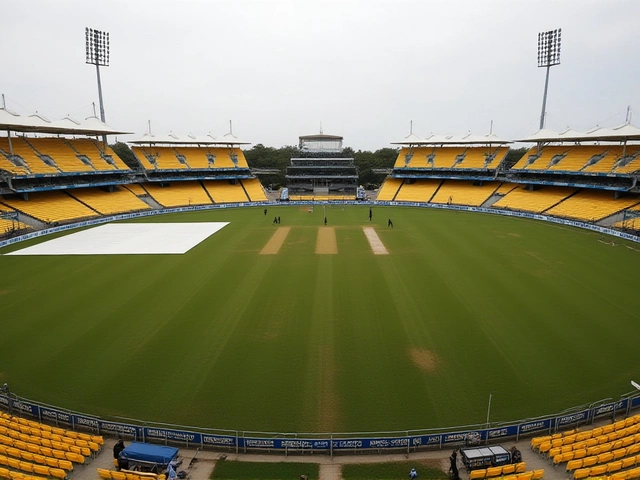On November 10, 2025, police uncovered a chilling terror cache inside a rented flat in Dhauj village, Faridabad — just 25 kilometers from India’s capital — revealing a chillingly sophisticated plot involving Muzammil Shakeel, a Kashmiri doctor working at Al-Falah Hospital, and his associate, Adeel Ahmad Rather. The haul: 350–360 kilograms of ammonium nitrate, an AK-47 rifle with three magazines and 83 live rounds, a pistol, 20 timers, 24 remote detonators, batteries, wiring, and heavy metal components — all hidden in suitcases, concealed behind false walls, and stored in a residential building that had been rented for months under false pretenses. This wasn’t a random find. It was the culmination of a weeks-long, multi-state operation that began with a poster — pasted on a wall in Srinagar on October 27, 2025 — and ended with one of the largest bomb-making material seizures near Delhi in recent memory.
The Trigger: A Poster in Srinagar
It started with something small: a printed sheet, stuck to a lamppost near the Government Medical College in Srinagar. It bore the logo of Jaish-e-Mohammed, a Pakistan-based terror group banned in India since 2002. The poster, dated October 27, 2025, called for "jihad" and featured the face of Masood Azhar. Police traced it to Adeel Ahmad Rather, a former senior resident at GMC Anantnag who had resigned in 2024 and relocated to Saharanpur, Uttar Pradesh. Under interrogation, Rather didn’t deny the act — but he did something far more consequential: he named Muzammil Shakeel.The Hidden Arsenal in Faridabad
Muzammil Shakeel, a 32-year-old physician from Pulwama, had been working at Al-Falah Hospital since early 2024. Neighbors described him as quiet, punctual, and always arriving late — often with heavy suitcases. What they didn’t know: those suitcases weren’t clothes. Police say Shakeel rented the Dhauj flat in August 2025, paying six months in advance in cash. The landlord, unaware of the contents, later told investigators Shakeel claimed he was "storing medical equipment for a research project." But the equipment? Eight large suitcases and four smaller ones, each packed with ammonium nitrate — a common fertilizer that, when mixed with fuel oil, becomes a devastating explosive. The delivery arrived via a truck from Punjab, disguised as agricultural supplies. It took 15 days to unload and conceal it. The AK-47? Found beneath a false floor panel in the master bedroom. The timers? Wired to batteries and remote controls, ready to be triggered. "This wasn’t just storage," said Faridabad Police Commissioner Satender Kumar Gupta during a press briefing. "This was a staging ground. The quantity, the timing, the proximity to Delhi — it suggests something large was planned. We’re still piecing together the target."Arrests Spread Across States
The net widened fast. On November 9, nine people were detained in coordinated raids across the Kashmir Valley, including two brothers of Muzammil Shakeel. Among those arrested: Arif Nisar Dar, Yasir-ul-Ashraf, Maqsood Ahmad Dar, Molvi Irfan Ahmad, and Zameer Ahmad Ahanger — all from Jammu and Kashmir. But the most surprising arrest? Ishtiyaq, the imam of a mosque in Faridabad’s Lal Bagh area. Police say Ishtiyaq had been in regular contact with Shakeel, delivering sermons that authorities now believe were coded messages. "He wasn’t just a religious figure," said a senior investigator. "He was a communicator. A bridge." Even more startling: police recovered a Maruti Swift belonging to Dr. Shaheen Shahid, a doctor from Lucknow, from which a rifle and live cartridges were seized. Shahid is now in custody, and police believe he may have helped transport materials between states.Family in Shock, Public in Fear
Muzammil’s mother, Naseema, spoke to ANI on November 11, her voice trembling. "He left home four years ago. We thought he was doing good work. We didn’t know he was involved in anything like this. When we heard he was arrested, we thought it was a mistake. Now they say he’s connected to a Delhi blast? We have no proof. We just want our sons back." She added that her other son, too, had been arrested — a detail that underscores how deeply the network may have penetrated one family. Meanwhile, rumors swirled online. Some outlets, including India Today, claimed the seizure was as high as 2,900 kilograms — nearly eight times the official figure. Police have not confirmed this. But even at 360 kg, the amount is enough to level a city block. Ammonium nitrate in this quantity — if detonated near a crowded market, train station, or government building — could kill hundreds.Why This Matters
This case isn’t just about weapons. It’s about trust. Two doctors — men trained to heal — allegedly built a bomb factory in a quiet residential neighborhood. One used his medical credentials to gain access to a hospital and community. The other used his position as a religious leader to move information. The system didn’t fail because of a lack of surveillance — it failed because the perpetrators were invisible. They were the quiet man next door. The doctor who never missed a shift. The imam who always greeted children by name. The investigation continues across Haryana, Uttar Pradesh, and Jammu and Kashmir. Forensic teams are analyzing the timers, the wiring, the remote controls — looking for fingerprints, serial numbers, manufacturing traces. Police are also reviewing mobile data, bank transactions, and travel records from the past year. One unanswered question looms: Was this meant for Delhi? And if so — when?What’s Next
Police are still searching for a second doctor — believed to be Shakeel’s mentor — who vanished after the raid. Sources say he may have fled to Pakistan-administered Kashmir. Meanwhile, the Union Home Ministry has ordered a review of security clearances for medical professionals working in high-risk zones. Hospitals in Delhi-NCR are now being asked to verify employee backgrounds more rigorously. The government has also tightened regulations on bulk fertilizer sales — ammonium nitrate purchases over 10 kg now require police clearance. This case has reignited debate over radicalization among educated youth. Why would a doctor, with a promising career, turn to terror? The answer, investigators say, may lie not in poverty or politics — but in online echo chambers and carefully curated propaganda. "These aren’t the foot soldiers of old," said a counter-terrorism analyst in New Delhi. "They’re the professionals. The ones you trust. That’s what makes them dangerous."Frequently Asked Questions
How did ammonium nitrate get into Faridabad without detection?
The ammonium nitrate was shipped from Punjab under false commercial labels as "agricultural fertilizer," bypassing standard checks because it was below the threshold requiring special permits. Buyers often use intermediaries with legitimate farming businesses to avoid scrutiny. Police are now auditing over 120 fertilizer suppliers in northern India since the seizure.
Why were two doctors involved in this plot?
Doctors are seen as trustworthy figures, giving them access to communities, housing, and transportation networks. Their medical training also makes them adept at handling chemicals and understanding timing mechanisms — skills easily repurposed for bomb-making. In this case, both men used their professional status to blend in while building a terror cache.
What charges are the accused facing?
The accused are charged under Sections 7 and 25 of the Arms Act, and Sections 13, 28, 38, and 39 of the Unlawful Activities (Prevention) Act (UAPA). These carry life imprisonment or the death penalty. The UAPA charges specifically relate to conspiracy, membership in a banned organization, and preparation for terrorist acts — not just possession.
Is this connected to previous terror attacks in Delhi?
No direct link has been established yet, but police are investigating whether this cache was meant for a future attack. The timing — just weeks after the 2025 Republic Day parade — and the location near major transport hubs suggest it may have been part of a broader, still-unfolding plan. Forensic analysis of the timers may reveal if they match devices used in past incidents.
What’s being done to prevent similar cases?
The Home Ministry has mandated background checks for all medical staff in high-risk zones, including Delhi-NCR, starting December 1, 2025. Banks are also required to flag large cash deposits by professionals with no clear income source. Additionally, a new AI-based monitoring system is being rolled out to scan social media for coded religious or political messaging among healthcare workers.
How many people are still missing in this case?
Police confirm one key suspect — a senior doctor from Pulwama believed to be Shakeel’s mentor — remains at large. He reportedly left India in late October 2025 via a flight to Lahore. Interpol has issued a Red Notice, and India is requesting extradition. Authorities believe he may have coordinated the logistics from abroad.





